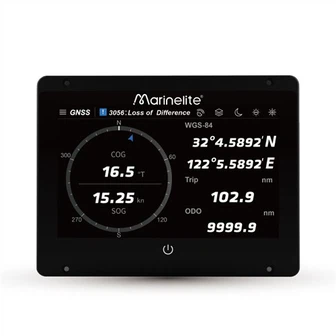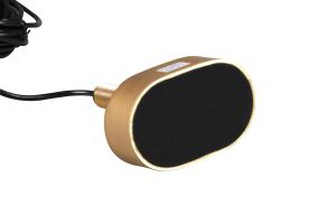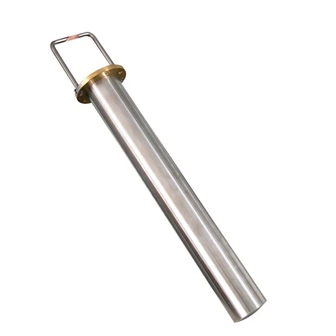Differences between Class A and Class B AIS
Understanding the Key Differences Between Class A and Class B AIS
Automatic Identification Systems (AIS) are indispensable tools in modern maritime navigation, enhancing safety, collision avoidance, and vessel tracking. However, not all AIS devices are created equal. The two primary classifications-Class A and Class B-serve distinct purposes and cater to different types of vessels. Whether you're a ship operator, maritime enthusiast, or simply curious about marine technology, understanding these differences is critical. Let's dive into the technical, functional, and regulatory contrasts between Class A and Class B AIS.
1. Technical Specifications
Transmission Power and Range
- Class A: Equipped with a 12.5-watt transmitter, Class A devices have a significantly broader transmission range (up to 20-30 nautical miles). This ensures reliable communication even in open oceans.
- Class B: Uses a lower 2-watt transmitter, limiting its range to approximately 5-10 nautical miles. This suits coastal or inland waterways but is less effective for long-haul voyages.
Data Transmission Frequency
- Class A: Transmits dynamic data (position, speed, course) every 2–10 seconds when moving faster than 2 knots, and every 3 minutes when anchored. This high update rate is critical for large vessels requiring real-time situational awareness.
- Class B: Sends updates less frequently-every 30 seconds for moving vessels and every 3 minutes when stationary. While sufficient for smaller boats, this slower rate may reduce collision-avoidance precision in high-traffic areas.
Communication Protocols
- Class A: Utilizes Self-Organized Time Division Multiple Access (SOTDMA), which reserves dedicated time slots for data transmission. This minimizes signal collisions and ensures priority for critical vessels.
- Class B: Relies on Carrier-Sense TDMA (CSTDMA) or Random Access TDMA (RATDMA) which are less structured. Class B devices "listen" for gaps in transmissions, increasing the risk of signal overlap in congested areas.
2. Target Users and Regulatory Requirements
Mandatory vs. Voluntary Use
- Class A: Mandatory for commercial vessels under the International Maritime Organization (IMO) Safety of Life at Sea (SOLAS) regulations. This includes cargo ships, passenger vessels, and large tankers.
- Class B: Designed for non-SOLAS vessels, such as recreational boats, fishing vessels, and small craft. Installation is voluntary but highly recommended for safety.
Cost and Accessibility
- Class A: Higher upfront and operational costs (up to $3,000–$5,000) due to advanced hardware, compliance testing, and integration with other bridge systems (e.g., radar, ECDIS).
- Class B: Far more affordable (typically $500–$1,500), making it accessible to leisure boaters and small operators. Many models are plug-and-play, requiring minimal installation expertise.
3. Functional Capabilities
Data Types and Messaging
- Class A: Transmits 27 types of data, including advanced fields like voyage status (e.g., "underway," "anchored"), destination, and ETA. It also supports Safety-Related Text Messages** (SRMs) for direct communication between vessels or shore stations.
- Class B: Limited to 22 data types, omitting voyage-specific details. While it can receive SRMs, most Class B units cannot send them.
Integration with Navigation Systems
- Class A: Often interfaces with Integrated Navigation Systems (INS), enabling automated collision avoidance and route planning. It also complies with Long-Range Identification and Tracking (LRIT) requirements.
- Class B: Rarely integrates with complex systems. Focuses on basic AIS functionality, such as displaying nearby vessels on a chart plotter.
Power Supply
- Class A: Requires a dedicated power source (24V DC) and backup battery, aligning with SOLAS standards for operational reliability.
- Class B: Typically runs on 12V DC, drawing power from the vessel's existing electrical system.
4. Why the Distinction Matters
The divide between Class A and Class B reflects the risk profiles and operational needs of different vessels. For example:
- A cargo ship crossing busy shipping lanes needs Class A's rapid updates and priority signaling to avoid disasters.
- A sailboat navigating coastal waters benefits from Class B's affordability and adequate coverage without overinvesting in capabilities it won't use.
Regulatory bodies enforce these standards to ensure global interoperability while balancing safety and cost. Mixing Class A and B devices in crowded waters can occasionally lead to gaps in data accuracy, but advancements like "Class B+" (offering faster updates) aim to bridge these differences.
Choosing the Right AIS for Your Vessel
- Choose Class A if:
- Your vessel is SOLAS-compliant or operates internationally.
- Real-time data and collision avoidance are mission-critical.
- Choose Class B if:
- You own a small recreational or fishing vessel.
- Budget constraints exist, but basic AIS functionality is desired.
Final Thoughts
While Class A and Class B AIS share the same foundational purpose-enhancing maritime safety-their technical disparities highlight the importance of selecting the right tool for the job. As technology evolves, hybrid solutions and cost-effective upgrades continue to blur the lines between these classes, promising a safer and more connected future for all mariners.
By understanding these differences, vessel operators can make informed decisions, regulators can refine standards, and the maritime community as a whole can navigate toward safer horizons.







